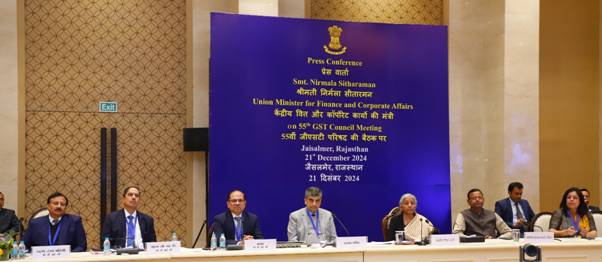Futures and Options (F&O) are popular financial instruments in the Indian stock market, allowing investors to hedge risks and speculate on price movements. However, the tax implications of trading in F&O can be complex. This article will guide you on how to treat F&O in income tax, which Income Tax Return (ITR) to file, how to calculate turnover for F&O, whether a tax audit is applicable, and how to treat losses in F&O trading.
Taxation of F&O Transactions
F&O transactions are treated as business income under the Income Tax Act, 1961. They can either result in profit or loss, and the treatment depends on whether the transactions are speculative or non-speculative.
Speculative vs Non-Speculative Transactions
- Speculative Transactions: Transactions that are settled without the actual delivery of the underlying asset.
- Non-Speculative Transactions: F&O transactions are considered non-speculative as they are usually settled in cash and not by actual delivery.
Which ITR to File
For individuals and HUFs trading in F&O, the appropriate ITR form to file is:
- ITR-3: For individuals and HUFs having income from a proprietary business or profession.
- ITR-4 (Sugam): For individuals, HUFs, and firms (other than LLPs) who have opted for the presumptive taxation scheme under Section 44AD, 44ADA, 44AE
44Ad Punishment Clause
44AD (4) Where an eligible assessee declares profit for any previous year in accordance with the provisions of this section and he declares profit for any of the five assessment years relevant to the previous year succeeding such previous year not in accordance with the provisions of sub-section (1), he shall not be eligible to claim the benefit of the provisions of this section for five assessment years subsequent to the assessment year relevant to the previous year in which the profit has not been declared in accordance with the provisions of sub-section (1).
(5) Notwithstanding anything contained in the foregoing provisions of this section, an eligible assessee to whom the provisions of sub-section (4) are applicable and whose total income exceeds the maximum amount which is not chargeable to income-tax, shall be required to keep and maintain such books of account and other documents as required under sub-section (2) of section 44AA and get them audited and furnish a report of such audit as required under section 44AB.
Means: A commitment of 5 years is necessary to continue with the presumptive taxation scheme, if any person once opted for 44AD then he have to continue with next 5 years with 44AD, its impact is clarified with below example:
A person Ram doing F&O earned Profit of Rs. 5,00,000 (Turnover Rs. 50 Lakh) in year 2024, he filed his ITR in FY 2024-25 opting with section 44AD shows actual profit and filled ITR,
In next year in F&O he made loss of Rs.6,00,000 (Turnover Rs.2 crore 50 lakhs), he thought if i opt for 44AD then i have to show minimum 6% profit on turnover i.e. 15,00,000 so he decided why to show income u/s 44AD lets go with normal business case, now there is punishment clause apply in this case he have to get his account audited in case of loss also.
Business Code in ITR 3

Calculation of Turnover for F&O
The Institute of Chartered Accountants of India (ICAI) has issued new guidelines on the calculation of turnover for Futures and Options (F&O) in its 8th edition of Guidance Notes (August 2022). This update simplifies the calculation method, particularly for options traders.
The calculation of turnover for F&O transactions has been simplified according to the latest ICAI guidelines.
For Futures:
- Sum of absolute values of profits and losses from futures transactions.
For Options:
- Sum of absolute values of profits and losses from options transactions..
According to 7th Addition of ICAI guidance Note:
Options Turnover: Absolute profit + Premium on sale of options
According to 8th Addition of ICAI guidance Note:
Options Turnover: Absolute profit
Examples
Futures Transactions:
| Transaction | Profit/Loss | Absolute Value |
|---|---|---|
| Trade 1 | ₹50,000 | ₹50,000 |
| Trade 2 | -₹30,000 | ₹30,000 |
| Trade 3 | ₹40,000 | ₹40,000 |
Futures Turnover: Total = ₹50,000 + ₹30,000 + ₹40,000 = ₹120,000
Options Transactions:
| Transaction | Profit/Loss | Absolute Value |
|---|---|---|
| Trade 1 | ₹20,000 | ₹20,000 |
| Trade 2 | -₹10,000 | ₹10,000 |
| Trade 3 | ₹15,000 | ₹15,000 |
Options Turnover: Total = ₹20,000 + ₹10,000 + ₹15,000 = ₹45,000
Total Turnover for F&O: Futures = ₹120,000 Options = ₹45,000
Overall Turnover = ₹120,000 (Futures) + ₹45,000 (Options) = ₹165,000
Profit, Expenses & Tax :
- As F&O treated as normal Business Income, so Tax as per Income tax slab rates is applicable on F&O profits
- You can claim Expenses from your Profit/Loss like: Brokerage fee, Electricity expenses, Audit Fee, Repair of computer, Interest on loan taken, Subscription fee, Depreciation, any other direct expenses. but no expense are allowed if you are showing F&O income under section 44AD
- You can download P&L Statement of F&O from your Demat Account, Format is as below:

Tax Audit Applicability
Tax audit is mandatory if the turnover from F&O transactions exceeds the prescribed limit under Section 44AB of the Income Tax Act., limits are as follows:
- Turnover upto ₹3 crore (New limit): Presumptive scheme
- Turnover between ₹3 crore to ₹10 crore (non-cash transactions less than 5% of total receipts and payments): Tax audit not required, But books of accounts required to be maintained
- Turnover exceeding ₹10 crore: Tax audit required.

Treatment of Losses in F&O Trading
- Can be set off against any other income except salary income.
- Can be carried forward for up to 8 years and set off against business income.
FAQ on Income Tax for Futures and Options (F&O)
1. I have sold lots of shares but the amount is still in my Demat account. What is the taxability?
Answer: The taxability of your transactions depends on the nature of the trades:
- If the shares sold were held for investment purposes, the gains or losses will be treated as capital gains.
- If the shares sold were part of F&O transactions, the gains or losses will be considered business income. The mere fact that the amount is still in your Demat account does not change the tax treatment. The transaction date determines the period of taxability.
2. If there is a loss in F&O, by when must I file my ITR to carry forward the losses?
Answer: To carry forward F&O losses, you must file your Income Tax Return (ITR) on or before the due date, which is typically July 31st of the assessment year. If you miss this deadline, you will not be allowed to carry forward the losses to subsequent years.
3. Can we claim deductions under Sections 80C to 80U from F&O income?
Answer: Yes, you can claim deductions under Sections 80C to 80U from your F&O income as it is treated as business income. Common deductions include:
- Section 80C: Deductions for investments in specified financial instruments (e.g., PPF, ELSS, life insurance).
- Section 80D: Deductions for health insurance premiums.
- Section 80E: Deductions for interest on education loans.
- Section 80G: Deductions for donations to specified funds and charities.
- Sections 80U: Deductions for individuals with disabilities.
4. Is there an advance tax liability for F&O income?
Answer: Yes, there is an advance tax liability for F&O income. As F&O transactions are treated as business income, you are required to pay advance tax if your total tax liability exceeds ₹10,000 in a financial year. The advance tax payment schedule is as follows:
100% of the total tax liability by March 15th.
15% of the total tax liability by June 15th.
45% of the total tax liability by September 15th.
75% of the total tax liability by December 15th.
You can contact team of Tax Experts to file Your ITR at 9150010300 or visit www.legalsahayak.com
Visit www.cagurujiclasses.com for practical courses











